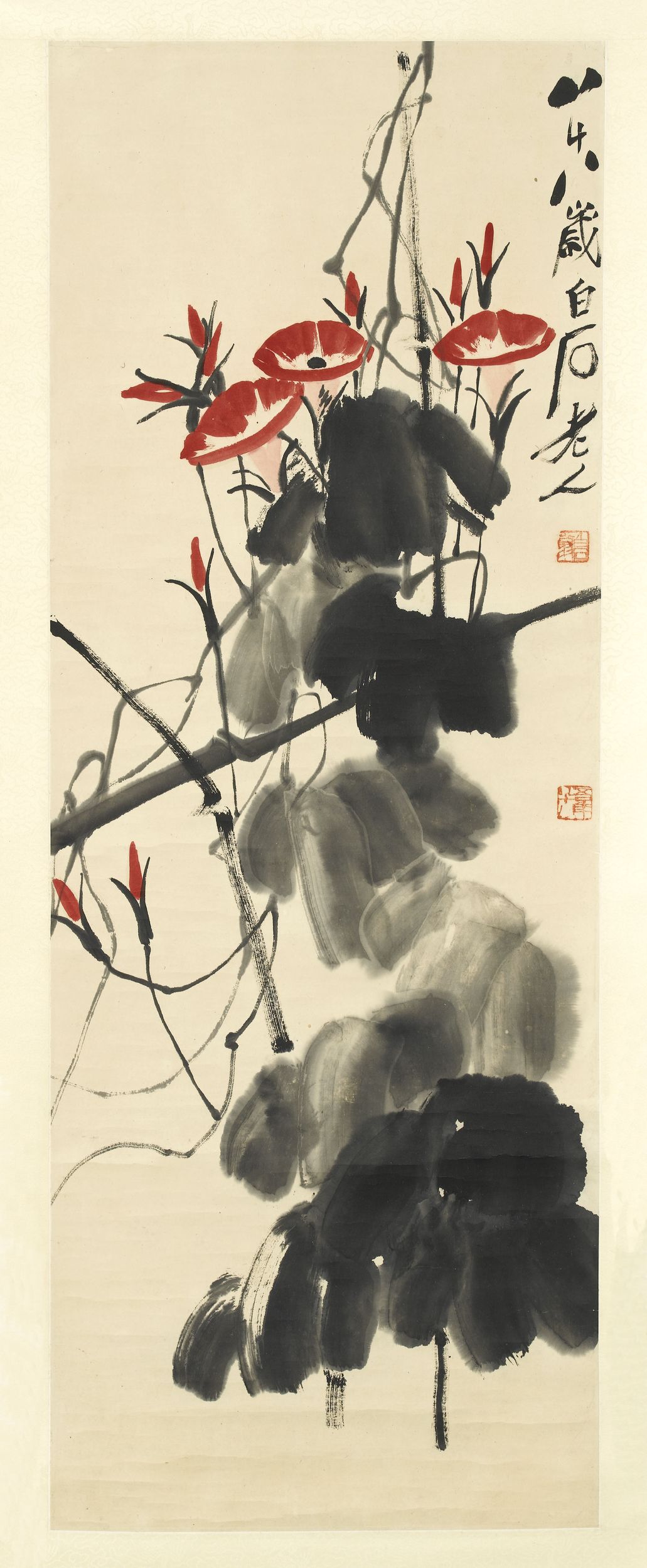
Liserons rouges
Papier, Encre, Couleurs - Pigments
Peinture
八十八歲白石老人; 白石翁; 五零年八十八
Don manuel : Guo, Youshou 郭有守, Docteur
M.C. 8727
This skilful composition structured by its modulations of ink tone is crowned with vibrant red bindweed flowers. This bold use of colour appeared late in the work of Qi Baishi. After his arrival in Beijing in 1917, he was advised by Chen Shizeng to familiarise himself with the work of Wu Changshuo. One of the major innovations introduced by Wu Changshuo in ink painting was the use of “Western Red”, yang hong, to paint prunus blossom. In the 1920s, Qi Baishi made use of this colour to transform his manner of painting. The violent contrast between “red flowers and ink leaves” (honghua moye) became one of the characteristics of Qi Baishi’s work. The singular rendering of the trumpet-shaped flower using a colour applied directly without a drawn outline appeared in the 1930s, as illustrated in a work in the Central Academy of Fine Arts, Beijing. Here, the use of an intense red for the petals modulated by the use of a lighter red, and ink for the leaves in varying degrees of intensity give rhythm to the composition: the relation between ink and colour is here expressed to perfection.